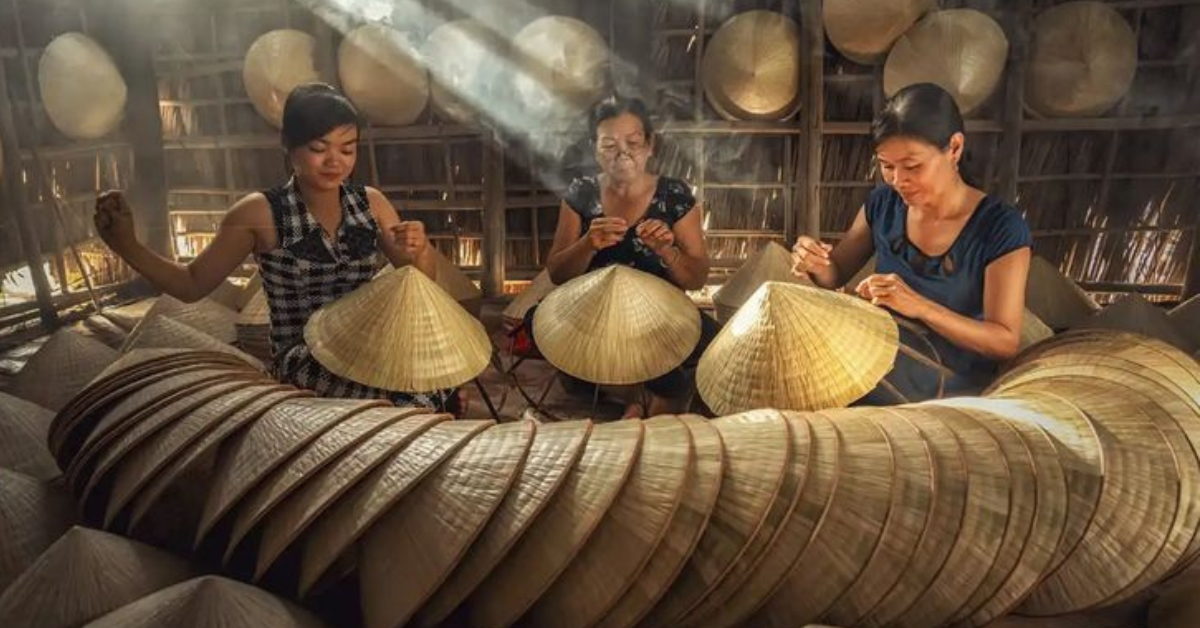Bali is more than just an island of breathtaking landscapes. It is a sanctuary of artistry, where craftsmanship is woven into the very fabric of life. Every carved wood panel, every hand-dyed batik, and every woven basket tells a story of devotion, patience, and cultural heritage. These traditions, passed down through generations, are more than just artistic expressions, they are a form of spiritual practice, a way of life that connects artisans to their ancestors, their gods, and the land they call home.
Yet, in a world of mass production, what does it mean to preserve such traditions? How do these time-honored crafts evolve, and what role do women play in shaping their future? As we explore the art of Balinese craftsmanship, we uncover not only its timeless beauty but also its transformation in the hands of those who carry it forward.

A Tradition Rooted in Spirituality
Balinese craftsmanship is not just about aesthetics, it's about meaning. Every object created, whether a ceremonial mask, an intricately woven textile, or a hand-carved lamp, holds deeper significance. Traditionally, artisans do not see their work as mere labor. Instead, crafting is a form of prayer, a way to connect with the divine. In Bali, objects are often infused with spiritual energy, making them more than just decorative items, they are vessels of history and belief. Techniques are passed down through families, ensuring that every new generation refines and preserves the skills of their ancestors. This creates a living lineage of artistry, where the hands of today honor the hands of the past. Balinese craft is deeply intertwined with nature. From locally sourced wood and plant-based dyes to traditional weaving techniques that minimize waste, sustainability is not a trend here, it is an inherent part of the process.

From Keepers of Tradition to Leaders of Change
For generations, women in Bali have quietly nurtured their craft, their hands guiding the threads, chiseling the wood, and dyeing the fabric that told the island’s stories. Yet, these women were often relegated to the background, their essential role in preserving the beauty of Balinese artistry going unnoticed. In a society that has long expected them to remain in the shadows, a quiet revolution is unfolding. Today, women are no longer just the silent hands behind the craft, they are stepping forward with pride, breaking boundaries and redefining their roles as business owners, designers, and innovators.
In the past, their expertise was often confined to domestic settings or small-scale community workshops. Now, they are boldly taking their place on the global stage, blending time-honored techniques with modern aesthetics to create pieces that honor tradition while speaking to a new, international audience. These women are not simply preserving a craft—they are transforming it.
They are the weavers of the future, the architects of a new narrative, one that celebrates both their heritage and their ability to adapt to the world around them. Balinese craftsmanship, once a secret whispered between generations, is now a statement of innovation, resilience, and creativity that resonates across continents.

Balinese craftsmanship is more than just a beautiful art form; it is a living, breathing testament to the island’s rich history, spirituality, and resilience. As women take the lead in shaping its future, they are not just preserving tradition, they are redefining it, ensuring that the soul of Bali continues to shine for generations to come.
In a world that often moves too fast, Balinese craft reminds us of the beauty in slowness, in human touch, and in stories woven through time.

